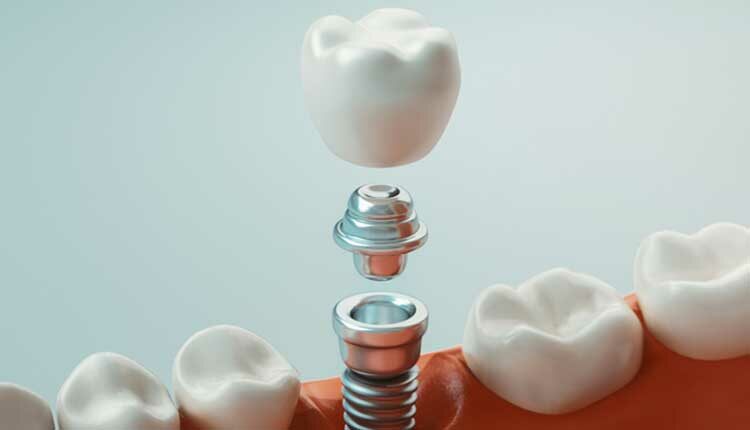 AlessandroPhoto / iStock / Getty Images Plus
AlessandroPhoto / iStock / Getty Images Plus
Implant Surfaces Are Integral to Successful Treatment Outcomes
Boat bottoms are treated with antifoulants to prevent damage from marine organism attachment. Wouldn’t it be great if we could outfit teeth with the same protection?
Dental implants have become increasingly popular in replacing missing or terminally compromised teeth. The methods for placing them continue to evolve toward making the process faster, safer, and more successful than ever. For instance, researchers have been investigating ways to enhance the retention longevity of dental implants once they are submerged in oral fluids.
Typically, when implants are inserted, they are immediately coated in blood and saliva. The proteins from these fluids adsorb onto implant surfaces, aiding the attachment of gingival tissue. Unfortunately, these otherwise beneficial oral proteins also allow pathogens entry where they can proliferate on implant surfaces. This process, called “biofouling,” can doom implant success.1,2
Attachment Issues
A new study conducted by the University at Buffalo in New York and Germany’s University of Regensburg and published in the Journal of Dental Research sought to enhance our knowledge about the process involved in biofouling. To that end, researchers examined the composition of the protein layer that typically forms on implant surfaces.1,2
As co-lead investigator Stefan Ruhl, DDS, PhD, professor of oral biology in the UB School of Dental Medicine explains it, “It is often this protein layer, rather than the biomaterial surface, that is encountered by colonizing bacteria or attaching tissue cells.”2
Ruhl says that such proteins help determine the long-term success or failure of implants and whether surrounding tissues will experience irreversible damage from infection. The hope is that by increasing understanding of biofouling, or bacteria adsorption, researchers may better understand how this process might be controlled through chemical modification of biomaterial surfaces, while fostering tissue attachment. This could go a long way to boosting the successful outcomes of implant placement.
Surface Testing
Rainer Müller, PhD, professor at the Institute of Physical and Theoretical Chemistry at the University of Regensburg, also co-led the study. Researchers in his lab designed silica beads, which were chemically modified with seven silane-based monolayers, featuring a variety of physicochemical properties such as hydrophilicity, hydrophobia, high to low surface free energy, and negative to positive surface charge.
The results out of Müller’s lab suggest that the amount of protein adsorbed from saliva is more complex than adsorption from serum. The researchers report large variations in adsorption among surface modifications in the case of salivary proteins. For example, adsorption was lower on surfaces that had a negative electric charge or that repelled water. In fact, they report that the adsorption of proteins from saliva was directly impacted by the biomaterial’s surface.
On the other hand, adsorption from blood plasma proteins was more uniform and appeared to be more influenced by the amount of protein in the biofluid than by biomaterial surface properties.
Müller notes that while the interaction between the biofluid proteins may play an important part in the adsorption process, it is still not quite understood. “The ultimate goal to connect surface properties to protein adsorption so that optimal tissue compatibility will be achieved but microbial adhesion will be prevented will likely not be as straightforward as expected,” he adds.2
More research is needed. But the groundwork that has been laid may eventually result in implant surfaces that are impervious to biofouling.
References
- Lehnfeld J, Dukashin Y, White GD, et al. Saliva and serum protein adsorption on chemically modified silica surfaces. J Dent Res. 2021;100:1047–1054.
- Robinson M. Dental implant surfaces play major role in tissue attachment. Click here.

